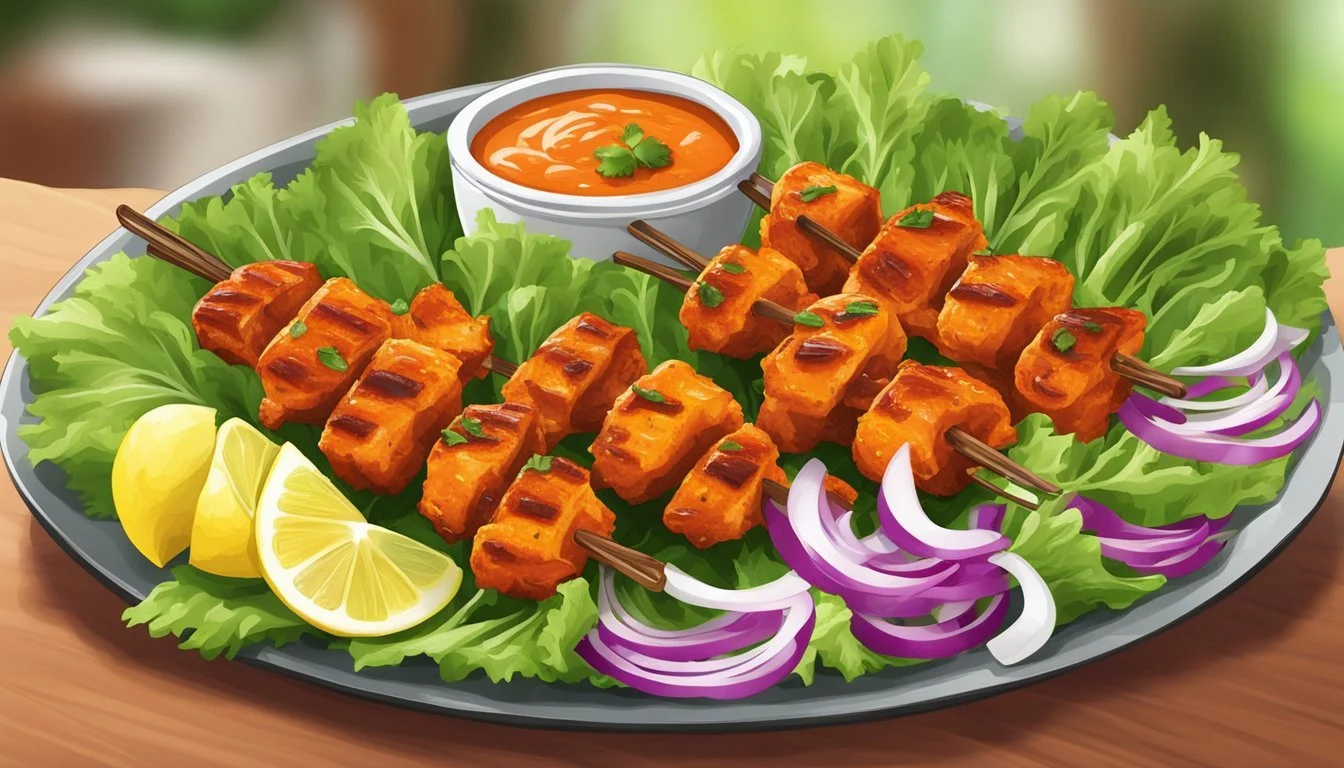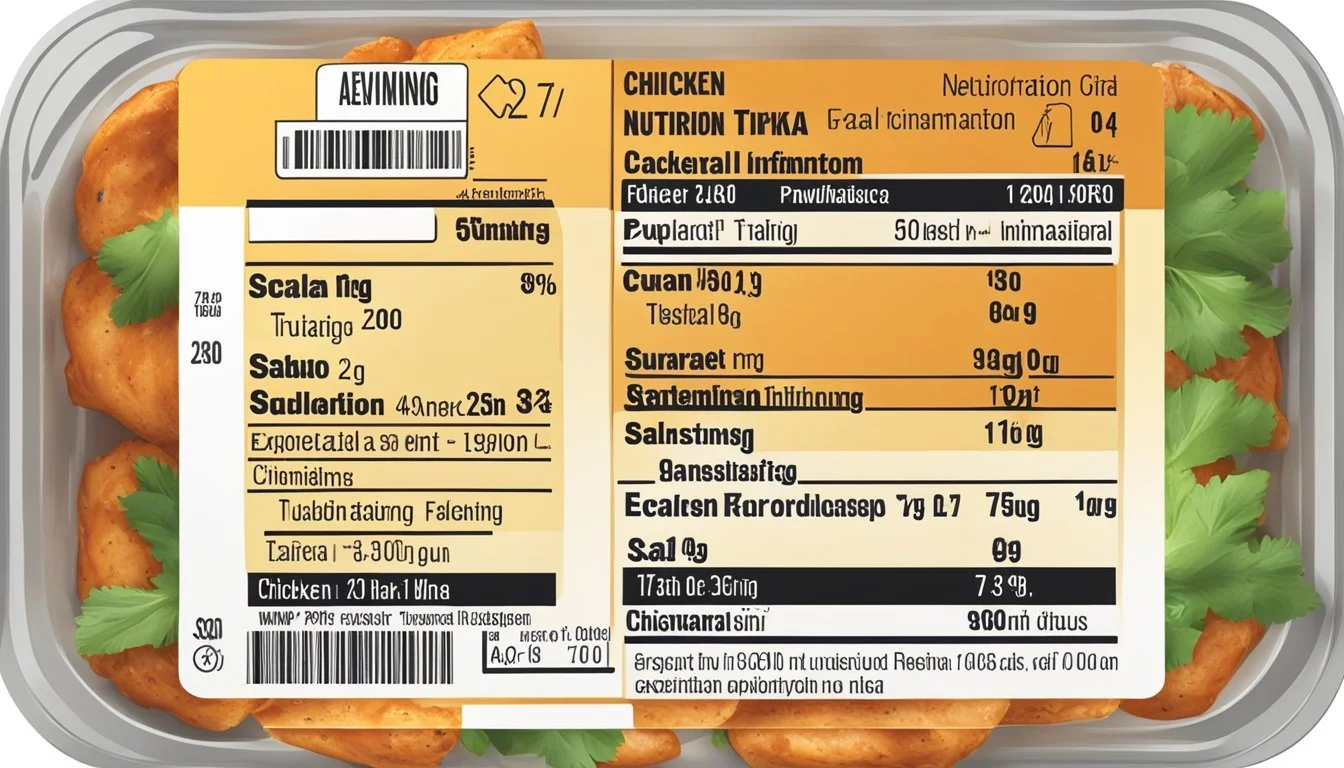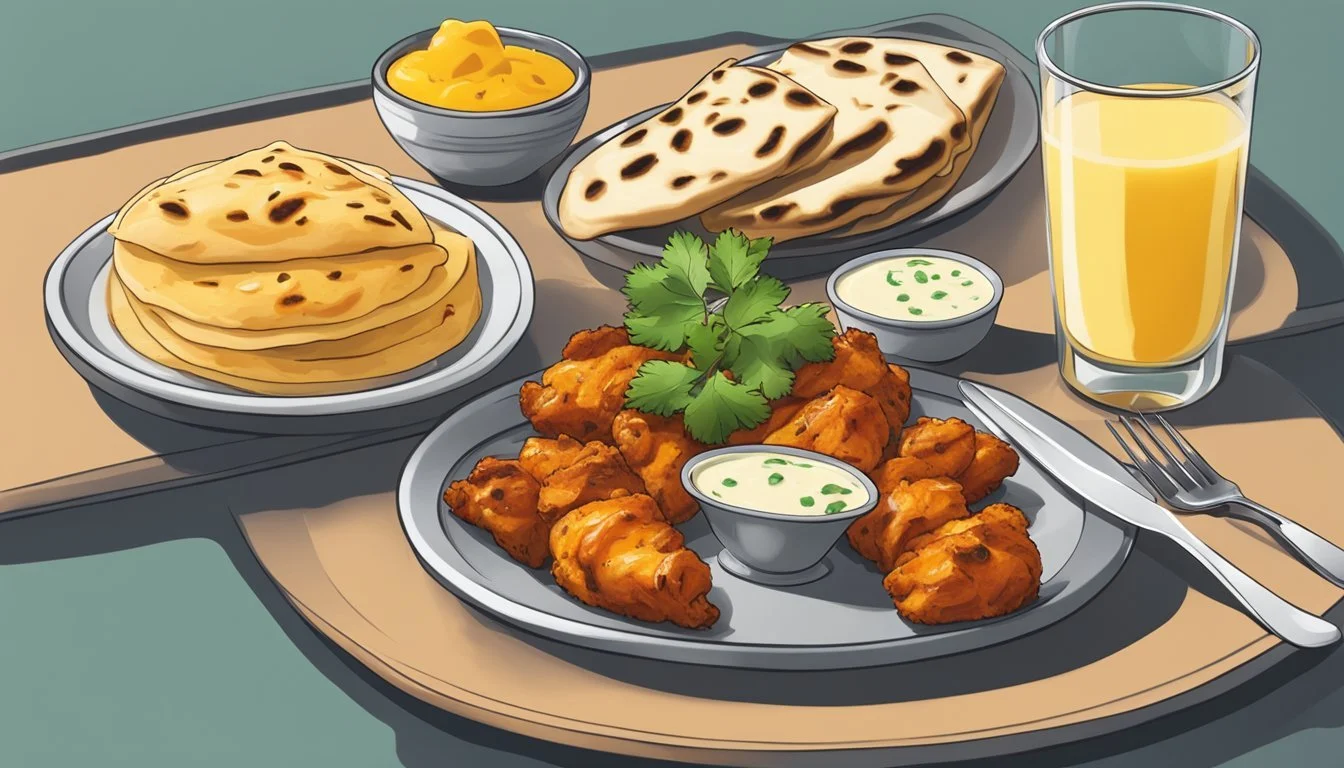How Long Does Chicken Tikka Last?
Storage Tips and Shelf Life
When it comes to enjoying Chicken Tikka, one common question that arises is how long it lasts once prepared. Properly stored in a sealed or air-tight container, Chicken Tikka can last in the refrigerator for 3 to 4 days. For those who want to savor this dish over a longer period, Chicken Tikka can also be stored in the freezer, where it will remain good for several months.
An essential factor in preserving the freshness and safety of Chicken Tikka is the marinade process. Before cooking, the chicken is typically marinated in a mixture of yogurt, lemon juice, and spices, which helps to enhance its flavor and tenderness. After marination and cooking, ensure the dish is cooled and transferred to storage containers promptly to maintain its quality.
By following best practices for storage, such as refrigerating within two hours of cooking and using air-tight containers, individuals can maximize the shelf life of their Chicken Tikka. This allows both the fresh and leftover portions to be enjoyed safely, without compromising taste or texture.
Composition of Chicken Tikka
Chicken tikka is a well-loved Indian dish that features marinated and spiced chicken pieces, often cooked on skewers. The key elements include the chicken, a flavorful marinade with yogurt, and an aromatic blend of spices and seasonings.
Chicken and Marinade
Chicken tikka starts with the chicken, typically boneless pieces such as chunks of breast or thigh meat. The marinade, pivotal for imparting flavor and tenderizing, often includes lemon juice, garlic, and ginger paste. The acidic properties of lemon juice help in breaking down the protein, ensuring a tender outcome.
Additionally, the marinade might contain salt to enhance flavor and ensure that the chicken remains juicy and well-seasoned. The chicken is usually left to marinate for anywhere from 20 minutes to a few hours, depending on the recipe specifics.
Spices and Seasonings
The vibrant flavor of chicken tikka comes from a mixture of traditional Indian spices. Garam masala, a blend of ground spices, is central to this dish, adding depth and warmth. Turmeric imparts a yellow hue and a subtle earthy taste. Cumin provides a savory note, while chili powder adds heat and color.
These spices, combined with smoked paprika where used, culminate in a rich, aromatic profile that is quintessential to chicken tikka. The spices are often mixed into the marinade, allowing the flavors to meld and penetrate the meat completely.
Yogurt in the Marinade
Yogurt is a critical component of the chicken tikka marinade. It not only helps in tenderizing the chicken but also contributes a rich and creamy texture. The yogurt, often whisked to remove lumps, acts as a medium to carry other flavors from the spices and seasonings into the chicken.
In some recipes, additional elements like grated cheese might be added to the yogurt for extra creaminess, though this isn't always the case. The yogurt-based marinade ensures that the chicken remains moist during cooking, whether it's grilled, baked, or air-fried. Adding a generous brushing of butter during cooking enhances the flavor and aids in achieving a slightly charred and smoky finish.
Preparation Techniques
Different methods to cook Chicken Tikka offer varied flavors and textures, while marination significantly impacts its tenderness and taste.
Traditional Cooking Methods
Traditional methods for preparing Chicken Tikka include grilling, baking, and using a tandoor. Grilling Chicken Tikka on skewers over an open flame gives it a smoky flavor and charred exterior.
Using a tandoor, a cylindrical clay oven, infuses the meat with a distinct earthy aroma. Chicken is threaded on skewers and cooked at high temperatures. Baking can also be used, where pieces are placed on a wire rack in the oven. Baking ensures even cooking but may lack the smokiness of grilling.
Modern Cooking Adaptations
Modern adaptations include air frying, using an electric grill, or an oven with convection settings. Air fryers can replicate the charred texture of traditional methods by circulating hot air around the chicken.
To use an air fryer, place the marinated chicken pieces in a single layer and cook at 200°C (400°F) for 8-12 minutes, flipping halfway. Electric grills offer convenience and allow for indoor grilling, maintaining the same searing effect. Using a convection oven helps achieve a crisp outer layer by using consistent airflow.
Marinating Time
Marination time is crucial for tender Chicken Tikka. A two-level marination process is often recommended. The first marination involves coating chicken in ginger-garlic paste, salt, and chili powder for at least 24 hours.
The second marination uses yogurt, spices, and herbs like mint and chilies for an additional 8-10 hours. This process ensures the flavors penetrate deeply, and the acids in yogurt help tenderize the meat. Preparing the chicken ahead of time and allowing it to marinate properly is essential for optimal texture and taste.
Optimal Storage Conditions
Proper storage of chicken tikka is crucial to maintain its flavor and ensure safety for consumption over time. This section will focus on best practices for refrigerating and freezing chicken tikka, and tips for preventing contamination.
Refrigerating Cooked Chicken Tikka
Refrigerate cooked chicken tikka within two hours of cooking to minimize bacterial growth. Store it in an airtight container to keep it fresh and flavorful. The ideal temperature for your refrigerator is below 40°F (4°C).
Chicken tikka can last 3-4 days in the refrigerator. To reheat, use a stovetop or microwave, ensuring the internal temperature reaches at least 165°F (74°C). Avoid reheating multiple times, as this can degrade the quality and safety of the food.
Freezing and Thawing
For longer storage, freezing is an excellent option. Place chicken tikka in a freezer-safe container or ziplock bag. Ensure it is well-coated in sauce or oil to prevent freezer burn.
Label the container with the date of freezing, as frozen chicken tikka remains optimal for up to 3 months. Thaw frozen chicken tikka in the refrigerator overnight, never on the countertop, to avoid bacterial growth. Reheat as mentioned above to ensure it's thoroughly heated.
Preventing Contamination
Use clean utensils and surfaces to handle chicken tikka before storing. Always use a new, clean container rather than reusing one. Seal the container tightly to avoid any exposure to air or other foods.
Avoid cross-contamination by keeping raw foods separate from cooked chicken tikka. Regularly clean the refrigerator and freezer to prevent the build-up of harmful bacteria. This careful handling ensures the chicken tikka remains safe and delicious for future consumption.
Shelf Life and Food Safety
Chicken tikka masala's shelf life depends on several factors including storage conditions, recognition of spoilage, and safe reheating practices to prevent foodborne illness.
Shelf Life Determinants
The shelf life of chicken tikka masala is determined by storage temperature, packaging, and ingredients. When stored in the refrigerator at or below 40°F (4°C), it can last 3-4 days. For extended storage, freezing at or below 0°F (-18°C) is recommended, which can preserve it for up to 3 months. Properly sealing the chicken tikka masala in airtight containers can minimize exposure to bacteria and enhance shelf life.
Important Factors:
Refrigeration: 3-4 days
Freezing: Up to 3 months
Packaging: Airtight containers to prevent contamination
Recognizing Spoilage
Spoiled chicken tikka masala can lead to foodborne illnesses. Signs of spoilage include off smells, changes in color, and a slimy texture. A sour or unpleasant odor is a clear indicator of bacterial growth. If the chicken or sauce appears discolored or has visible mold, it should be discarded immediately.
Spoilage Indicators:
Odor: Sour or unpleasant smell
Texture: Slimy feel
Appearance: Discoloration or mold
Safe Reheating Practices
Proper reheating of chicken tikka masala is crucial for food safety. It should be heated to an internal temperature of 165°F (74°C) to kill any harmful bacteria. Reheating in the microwave requires even heating, stirring occasionally. For stovetop reheating, bring the dish to a consistent simmer. Avoid reheating multiple times as this can increase the risk of bacterial growth.
Reheating Tips:
Temperature: Reach 165°F (74°C)
Microwave: Stir occasionally for even heating
Stovetop: Bring to a consistent simmer
Following these guidelines ensures that chicken tikka masala remains safe to consume, preventing risks associated with foodborne pathogens. Always use proper storage and reheating methods to maintain food quality and safety.
Nutritional Information
Chicken tikka is a popular dish that balances taste and nutrition. It provides essential macronutrients like proteins and fats and contains various micronutrients such as vitamins and minerals.
Calorie Content Breakdown
A typical serving of chicken tikka contains around 270-312 calories. This number varies based on ingredients and portion sizes. For instance, a recipe that includes butter or cream may have higher calories.
Activity Time Required to Burn Off 290 KCal Walking (3mph) 78 minutes Running (6mph) 28 minutes Bicycling (10mph) 40 minutes
Moderate calorie content makes it a manageable option for those monitoring their energy intake.
Macronutrient Profile
Chicken tikka offers a rich mix of macronutrients. A single serving generally comprises:
Protein: 17-61.6 grams
Fat: 8 grams, with minimal saturated fat
Carbohydrates: 31 grams, including 3 grams of dietary fiber
The high protein content supports muscle maintenance and growth. Moderate fat and carbohydrate levels help sustain energy without excessive calorie intake.
Micronutrients and Vitamins
Chicken tikka includes a variety of micronutrients important for health. Key micronutrients:
Vitamins: Contains B-vitamins like B6 and B12, which support metabolic functions and energy production.
Minerals: Offers essential minerals such as iron, which aids in oxygen transport in the blood, and zinc, important for immune function.
Sodium: Present in high levels due to seasoning and marination, so those monitoring salt intake should be cautious.
This dish provides a balanced mix of necessary nutrients while also being a tasty meal option.
Serving and Pairing Recommendations
Chicken tikka can be enhanced with complementary sides and beverages. It can be paired with a variety of rice dishes, breads, and flavorful drinks to create a well-rounded meal.
Accompaniments for Chicken Tikka
Basmati Rice: This aromatic rice is perfect for soaking up the flavorful sauce of chicken tikka. It provides a subtle, fluffy balance to the richness of the dish.
Naan Bread: Soft, buttery naan bread is ideal for scooping up chicken tikka. Variants like garlic naan or even cheese naan add an extra dimension of flavor.
Fresh Cilantro: Sprinkling fresh cilantro on chicken tikka adds a burst of fresh flavor and a touch of color.
Side Dishes: Common side dishes include sautéed vegetables or a simple cucumber and tomato salad. These light, fresh options contrast well with the savory notes of chicken tikka.
Vegetarian Options: Serving vegetable samosas or paneer tikka can offer variety and cater to vegetarian guests.
Wine and Beverage Pairings
Wine: A crisp, dry white wine like Sauvignon Blanc complements the spices in chicken tikka without overwhelming the palate. Alternatively, a light red wine such as Pinot Noir works well.
Beer: Light lagers and wheat beers pair nicely with spicy dishes like chicken tikka. They provide a refreshing counterbalance to the heat.
Non-Alcoholic Options: Mango lassi, a yogurt-based drink, is a classic pairing that helps cool the spices. Iced tea or sparkling water with a slice of lime are also great choices.
Creating Balanced Meals
Nutritional Balance: Pair chicken tikka with whole grain options like brown basmati rice for added fiber. Including a variety of vegetables ensures a balanced meal.
Portion Control: It’s important to serve appropriate portions of chicken tikka. Pairing it with filling sides like rice and naan helps maintain balance.
Presentation: Serving chicken tikka with colorful sides like fresh salads or vegetables not only enhances the nutritional value but also makes the meal visually appealing.
These elements together can transform chicken tikka into a delightful and well-rounded dining experience.
Culinary Variations
Chicken tikka masala has numerous variations influenced by regional preferences, dietary choices, and ingredient substitutions. This section explores these variations, highlighting unique regional styles, vegetarian and vegan options, and both dairy and dairy-free versions.
Regional Tikka Variations
Different regions have put their own spin on chicken tikka masala. In India, the dish tends to be spicier with a richer use of garam masala and cumin. In the UK, it often features a sweeter and creamier sauce.
In Pakistan, a touch of butter is added, giving it a slight taste similar to butter chicken. The use of local spices and cooking techniques profoundly impacts the dish’s final flavor profile. Regional variations also affect the side dishes served with tikka masala, such as naan, rice, or roti.
Vegetarian and Vegan Alternatives
For those following vegetarian or vegan diets, chicken tikka masala can be adapted using alternative proteins. Paneer, a type of Indian cottage cheese, can substitute chicken in vegetarian versions.
For vegans, tofu or tempeh are suitable alternatives, absorbing flavors well during marination and cooking. Some recipes even use jackfruit or chickpeas to create texture and flavor close to traditional chicken tikka masala. These plant-based proteins can be marinated and cooked similarly to their meat counterparts, ensuring a satisfying meal.
Dairy and Dairy-Free Versions
Chicken tikka masala typically includes dairy ingredients like yogurt and cream. Greek yogurt is a common choice for marination, adding tanginess and tenderness to the chicken.
For dairy-free versions, coconut milk can replace cream, offering a subtle sweetness that complements the spices. Cashew or almond milk are other potential alternatives, providing a creamy texture without dairy. These substitutions accommodate dietary restrictions while maintaining the dish’s richness and flavor.






